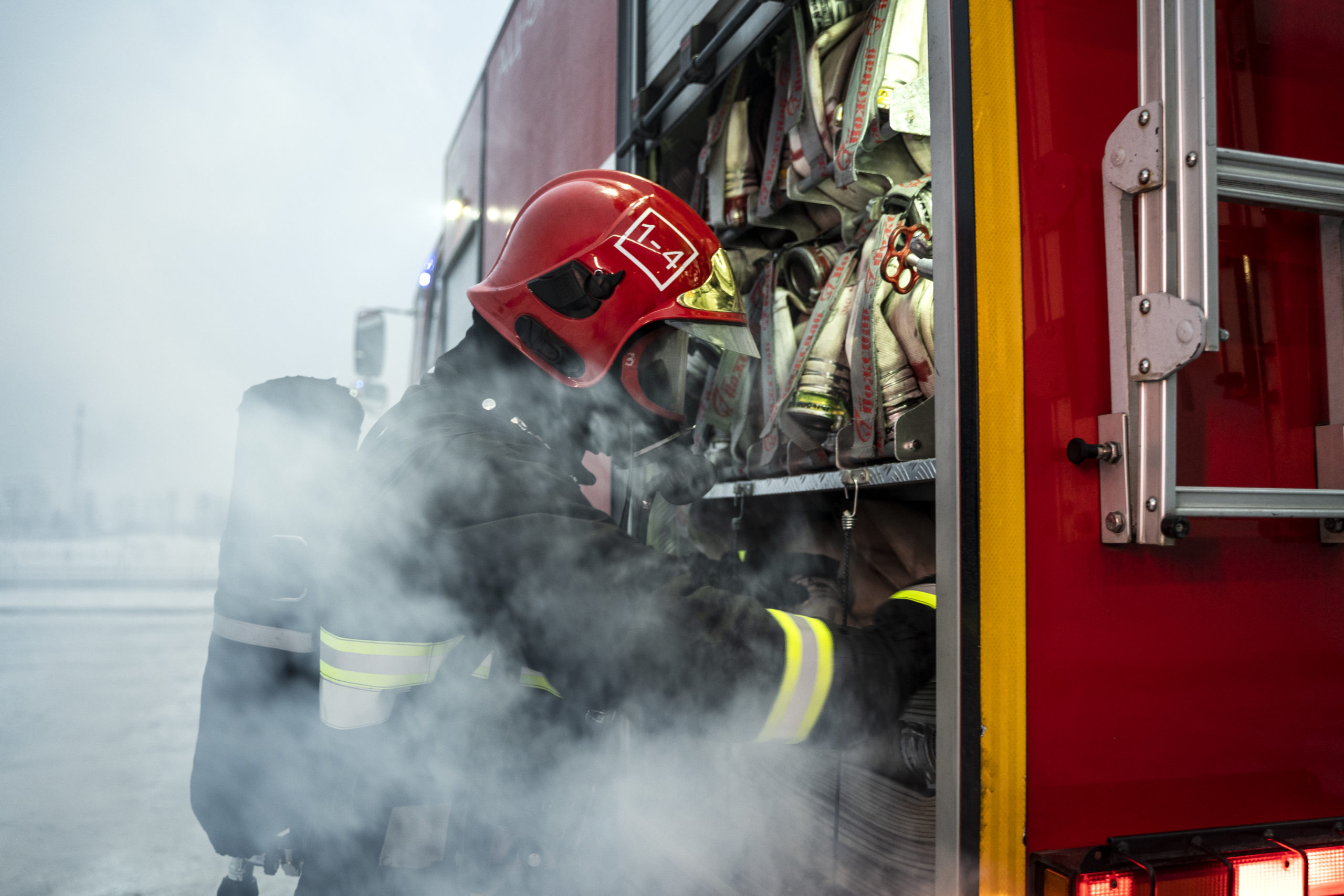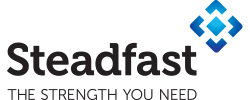As the incidence and severity of bushfire increases, new technologies are being devised to better defend people and communities.
As Australia has seen vividly illustrated in summers gone, global warming does not only mean hotter temperatures; it also means more intense weather patterns that stoke more destructive disasters. The country has always experienced bushfires, but as the climate changes, bushfires are changing too: they are getting more dangerous and more devastating. But the way we fight fires is changing too, and new technologies are being devised to better defend people and communities from this danger. Some of these ideas are having immediate effect, while others are more fanciful, but they all demonstrate how innovation is helping humanity better respond to impending disaster.
We’ve taken a look at how much technology has changed in relation to bushfires.
1. How technology is keeping firetrucks and firefighters safe
It’s not just in training that technology is helping firefighters stay safer – it’s also when they’re on the frontlines of the fires themselves.
One of the more terrifying dangers from bushfires is the risk of the flames overwhelming a fire truck while its crew is trapped inside. Following some lethal incidents of these “burnovers” in the 1990s, the CSIRO set about finding a solution to fix this scary problem. Not only are firefighters subject to extreme heat, but they are also exposed to radiation, smoke inhalation and toxic gases. To help reduce the impact of these challenges when in the face of a bushfire, fire trucks now have key features to support safety and survival such as:
- A ring of spray nozzles that deliver a ‘water curtain’ over the vehicle’s cabin.
- Radiant heat shields or curtains for windows to block radiation from reaching the people in the cabin. These inclusions also provide an extra layer of protection if the windows break.
- Water sprays to stop wheels and pumps catching alight.
- Fire resistant covers for electrical, pumps, air intakes and air hoses.
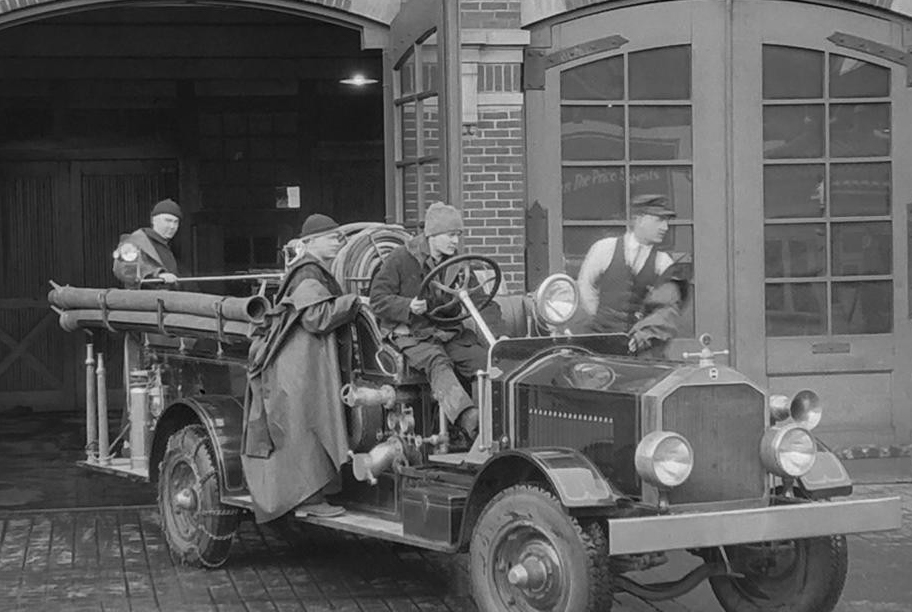
A fire truck from 100 years ago shows how little protection firefighters had.
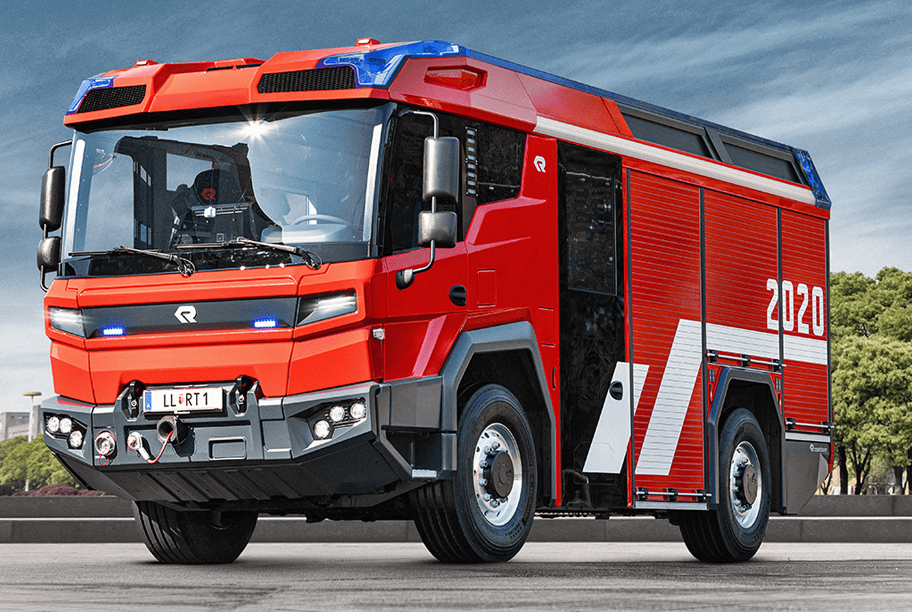
Todays fire trucks include water curtains, heat shields, and so much more technology to keep firefighers safe.
2. Bushfire Detection
Imagine a system that could detect any bushfire in Australia within minutes of ignition so firefighters could tackle the blaze before it spreads? A Queensland company, Fireball International, has recently announced the first purpose-built satellite for fire detection in Australia. Scheduled to launch next year, the satellite is the first of a planned constellation of 24 that will monitor Australia from low Earth orbit. Once the full system, including ground-based cameras and aerials drones is up and running, it will be able to spot fires within ONE MINUTE of ignition. That may sound like a bold claim, but it’s consistent with the goals of other organisations working on similar technology. Within five years, experts say, we could have a national system of automated bushfire surveillance.
Flashback to the 1900’s when ‘Fire Spotters’ climbed trees and towers and would watch the horizon for the first sign of a bushfire. This early form of lookouts were often just a clearing on top of a hill or a tree with the head removed, a platform attached and spikes in the side of the tree for the observer to climb.

A fire tower was spikes on the side of a tall tree that someone would climb to a platform and look for fires.

3. Using sound waves to extinguish fire
One thing that could revolutionise firefighting is if it could be done without water or chemicals. In 2015, undergraduate engineering students Seth Robertson and Viet Tran at George Mason University in the US have devised one way of doing this thanks to a fire extinguisher equipped with sound waves. Their prototype extinguisher uses low-frequency soundwaves between 20 and 120 Hz, weighs around 9 kg and uses mains power.
The principle behind the extinguisher is simple: as they are mechanical pressure waves that cause vibrations in the medium in which they travel, sound waves have the potential to manipulate both burning material and the oxygen that surrounds it. If the sound could be used to separate the two, the fire would be starved of oxygen and, accordingly, would be snuffed out.” The duo has since founded a company, Force SV, to commercialise the idea, and they have licensed the technology to see it further developed and implemented. There is, however, a difference between putting out small household fires and the bushfires that eat up hectares of forest and destroy entire towns. One problem with scaling the technology is that it doesn’t cool the flames, so there’s a risk that the fire could catch again when the sound is switched off. That doesn’t mean the technology couldn’t be used via drone or swarm robotics to assist with traditional firefighting, but it does mean there’s little chance that the future of firefighting will involve teams of DJs dropping a sick bass beat.
Rewind 100 years ago, and what would people do if there was no access to water? Where water wasn’t easily accessible firefighters would beat fires out with sticks and wet bags or canvas and created fire breaks by raking the dry grass and leaves towards the fire. Fire break (or fire roads) are still used today however there was definitely no such thing as sound waves back then.
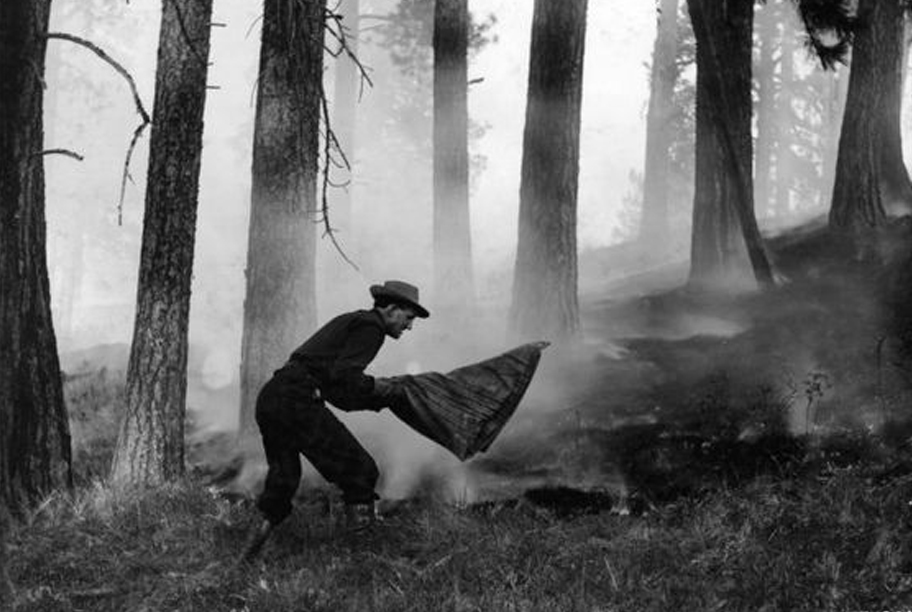
Trying to stop a fire with a wet burlap bag.
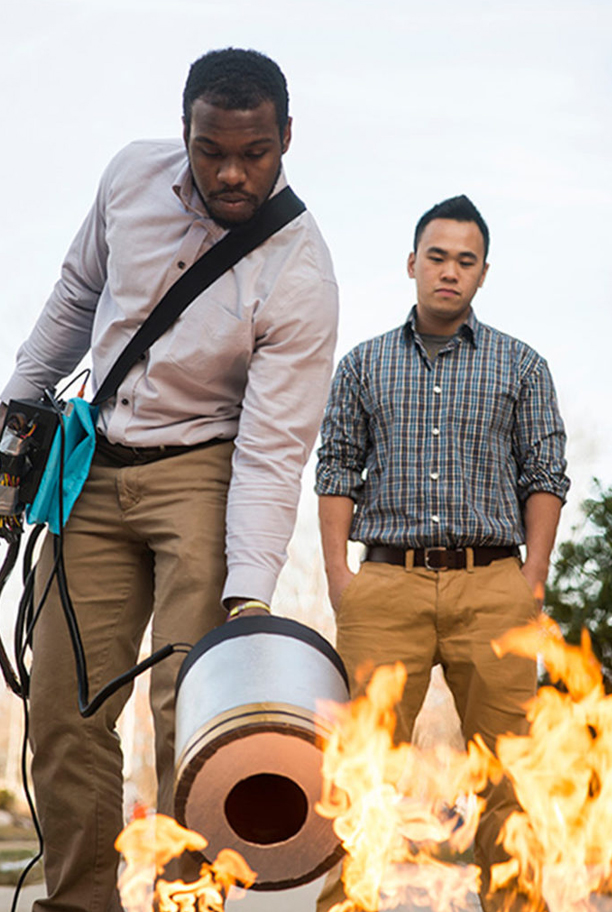
Seth Robertson and Viet Tran, electrical and computer engineering students, test their sound-blasting fire-extinguisher prototype.
No matter how much technology improves, there will still be the risk of bushfires and fires happening. Whether your business is rural, industrial or in the city you can never be over prepared. For more information on ways, you can cover your business on devastating events like fires, contact us today for a chat.
General Advice Warning: This advice is general and does not take into account your objectives, financial situation or needs. You should consider whether the advice is appropriate for you and your personal circumstances. Before you make any decision about whether to acquire a certain product, you should obtain and read the relevant product disclosure statement.
Clear Insurance Pty Ltd. ABN 41 601 916 689. AFSL No. 548953.

